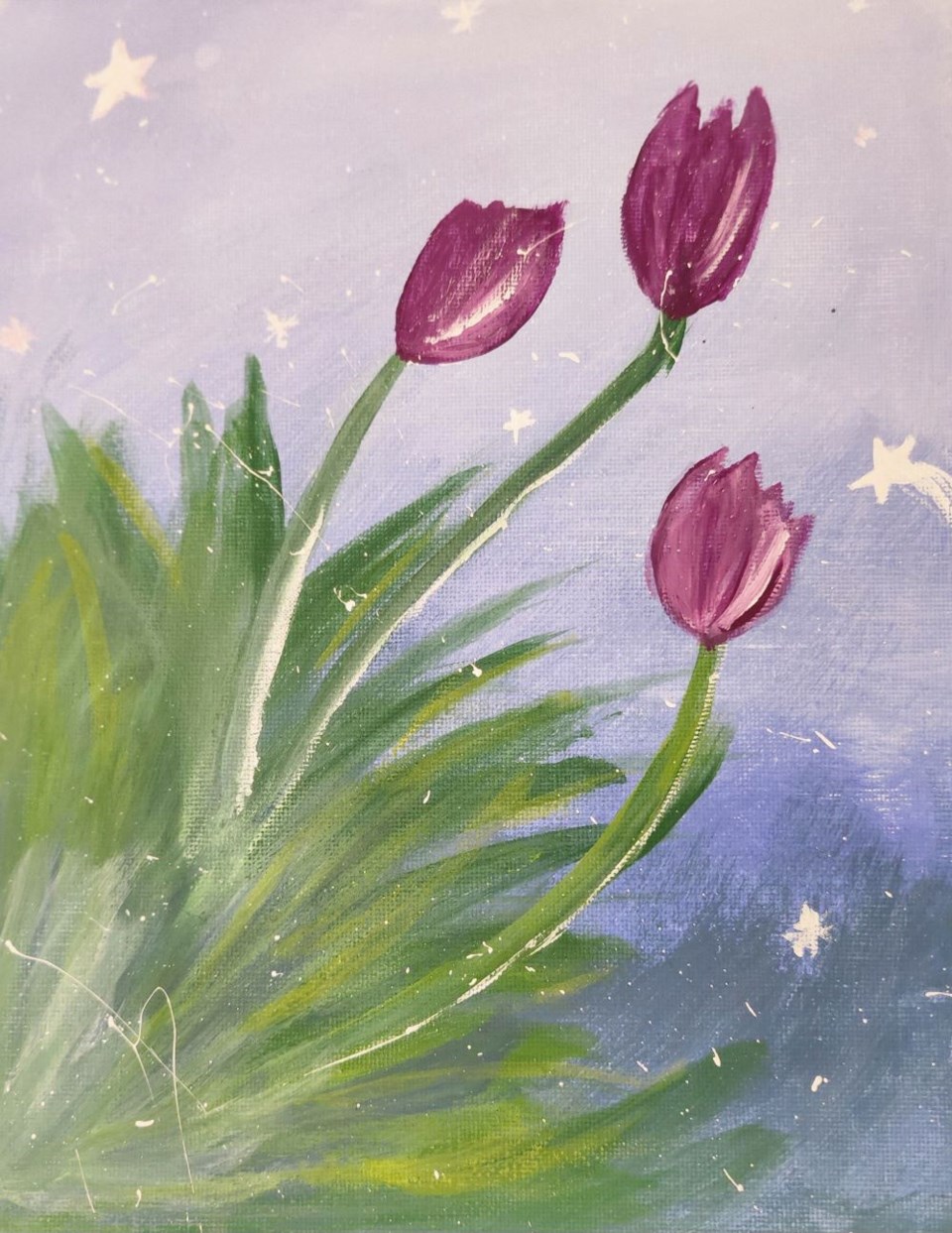I'm not a very good visual artist; I'm actually pretty bad, always have been. However, as much as I lack skill, I love delving into any kind of art that comes my way.
My recent artistic attempt took place at the Estevan Public Library during one of their latest painting nights. (By the way, I also tried their paper-making workshop earlier, which was really cool. Check out their program offerings; they have a lot for different ages, and at no cost).
Several guests gathered to be guided through painting tulips. We had all we needed for the painting, thanks to a video. But when you lack talent like me, not only do you need guidance, but you also need someone to stand next to you and correct the mismanaged lines, tilted horizon, wrong proportions, unmatching, not-blending colours, etc. Video guidance, unfortunately, doesn't allow for it. So, my tulip painting turned out… Well, it didn't, to my taste. (Please visit SaskToday.ca if you are interested to see how it didn't turn out.)
Nevertheless, I had a wonderful time and enjoyed every moment of the creative process. (Especially the portion of the workshop when I realized that I screwed up all I could and started painting stars, adding a personal touch to the original idea.)
While having the same paint, brushes and canvas provided, under the same guidance, every participant ended with different results, not only reflecting our skills and talents but also our personality, mood and much more. And even though I didn't care much about my three funny purple tulips, I felt happier after creating them. I thought it was a great experience, took my painting home, and pretty much forgot all about it.
A bit later, when my auntie asked what I was busy with lately, I shared a picture of the tulips with her. She is a person who always cheers for me, and she said that unlike me, she really liked the result. We had a good laugh about my love for art, and I thought it was the end of the story. But, as it turned out recently, I was wrong.
My auntie is a language and literature teacher, currently working with Grades 5-10, so guess what she did. She tasked her Grade 6 students to write an essay based on my painting. Of course, she didn't tell them who it was by, nor did she give them a background on it. She just showed them an image and asked to write a brief essay, discussing the potential name and what they see in that painting.
"I'd describe this painting as the Space Dream," said one of the students. "These flowers are very alive. They look through the dark sky at the stars – at their dreams."
"I'd name this painting the May Night," said another student, who visualized herself picking tulips and then enjoying her bouquet laying on the spring field and looking in the sky.
The third student saw the thirst for knowledge in tulips, straining their necks towards the sky, and named the piece Flowers Want to Know Everything.
This curious experience made me think about how reality, perception and meaning work.
The relationship between what we see and the meaning we attribute to it, shaping our perception of reality, is a fascinating interplay of psychology, philosophy and cognitive science. Our perception of not only art but the world, in general, is not a direct reflection of reality but rather a construction of our brains based on sensory input, past experiences, beliefs and cultural influences. The meaning we ascribe to what we perceive is heavily influenced by those factors as well.
(For one kid the picture was about spring, and for the other one it was about knowledge and challenges one faces on the way to it.)
We don't perceive everything equally, and what we focus on becomes more salient in our perception and can shape our reality. The reality the way we see it is also affected by society we live in. And language plays a separate role in shaping our perception of reality.
After all, what we see and the meaning we prescribe to it are deeply interconnected and mutually reinforcing. Our perception of reality is not a passive reflection of the world but an active and dynamic process shaped by our senses, cognition, experiences and social context.
As odd as it is, this entire experience made me turn to what's ahead for Estevan. There are many talks about the future of the Energy City and all of us here now. And while some people state that we are doomed, others see endless opportunities for success.
The time will show what we end up with, but I feel that a lot of it will depend on the vision we have, the narrative we tell and the meaning we prescribe to the image of the city, rather than what's indeed on that painting. (Because, hey, there is a good chance that the anonymous artist didn't even try putting any meaning into the painting, and it's up to us to fill it.)






